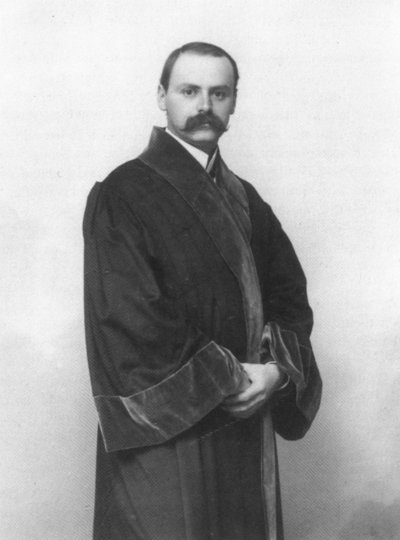(When I launched the Advent Calendar of Science Stories series back in December, I had a few things in mind, but wasn’t sure I’d get through 24 days. In the end, I had more than enough material, and in fact didn’t end up using a few of my original ideas. So I’ll do a few additional posts, on an occasional basis, to use up a bit more of the leftover bits from Eureka: Discovering Your Inner Scientist…)
While we mostly think of science being done in comfortable institutes if not gleaming laboratories, one of the most impressive and inspiring things about science is that people can and do carry on scientific research in an amazing range of conditions. I’ve previously mentioned the story of Sin-Itiro Tomonaga mailing his version of QED to Oppenheimer in 1948. One of the amazing things about that story is that Tomonaga was working in Tokyo, which had been utterly devastated by WWII– I spent a few months living in Japan in 1998, and visited the Edo-Tokyo Museum, and it’s really difficult to convey the scale of the damage inflicted on the city by American bombing in 1945. It’s difficult to imagine how Tomonaga and his group managed to make dramatic advances in physics in the disastrous conditions of postwar Japan.
But Tomonaga isn’t the most impressive example of advancing physics in impossible conditions. A century ago this November, Albert Einstein completed work on his theory of General Relativity, and published a paper laying out the essentials of the theory and showing that it correctly predicted the precession of the orbit of Mercury, a problem that had been vexing astronomers for decades. The mathematics of General Relativity are fearsomely complicated, though– Einstein had to laboriously learn a huge amount of math to make it work, which accounts for much of the ten-year delay between Special Relativity in 1905 and General Relativity in 1915. His calculation of the orbit of Mercury uses a bunch of simplifying approximations, as he thought it was too difficult to work out a general solution.
To his great amazement, though, within about a month of the completion of the theory, he received a letter from Karl Schwarzschild (the fellow in the robes and magnificent mustache in the photo above) presenting an exact solution to the equations of general relativity. In the simplest geometry you can deal with, mind– Schwarzschild assumed a uniform, stationary, spherical mass– but still, an exact and general solution of the type Einstein had thought might be impossible.
Schwarzschild’s solution is the first introduction of the modern idea of a black hole. It’s relatively (heh) simple to show from his equations that if the radius of the massive sphere becomes smaller than some critical value, the curvature of spacetime becomes so extreme that anything inside that radius is cut off from the rest of the universe– not even light can escape. This “Schwarzschild radius” is the location of the event horizon of a black hole, and investigating this phenomenon has driven a huge amount of fascinating physics (I highly recommend Kip Thorne’s book on black holes, which presents a very detailed history of the ideas).
The most amazing thing about Schwarzschild’s short letter, though, is the conclusion. He ended the letter with one of the most incredible sentences ever to appear in the scientific literature:
As you see, the war treated me kindly enough, in spite of the heavy gunfire, to allow me to get away from it all and take this walk in the land of your ideas.
Schwarzschild’s letter was written in December of 1915, from his station with an artillery company of the German army on the Eastern Front of World War I. So, not only did he rapidly develop a solution that Einstein had doubted was possible, he did it in one of the worst environments imaginable. (And, in fact, within six months he was dead, of an autoimmune disease contracted on the front.)
So, the next time you’re trying to do some science, and find yourself bothered by petty distractions– people talking, bad music, crying babies– give a thought to the example of Karl Scwarzschild, which puts everything else into a very different perspective.
(“Too much fucking perspective,” in the immortal words of David St. Hubbins…)
——
(Awesome Schwarzschild photo from Potsdam University.)

I recall reading something a long time ago about Einstein’s calculation of the advance of the perihelion of Mercury and as I remember it seemed pretty loosey-goosey.
Speaking about the difficult conditions in postwar Japan I recall hearing that Iwasawa as a student at that time was trying to get ahold of Malcev’s work on Lie Groups but couldn’t obtain any copies. So he decided to work out Malcev’s results on his own and wound up proving much stronger results.
A great example of a scientist operating under difficult conditions is Rita Levi-Montalcini, who received the Nobel Prize in medicine and Physiology in 1986. During WW2 she did experiments in a “lab” that she set up in her bedroom. As a jew in Italy during WW2, her opportunities were limited, but she made the best of a difficult situation. Considering that she was a both jewish and a female, her accomplishments are truly special
Basically the academics in Germany were so busy then that they went straight from the bath to the graduation ceremony. Hence the bathrobe.